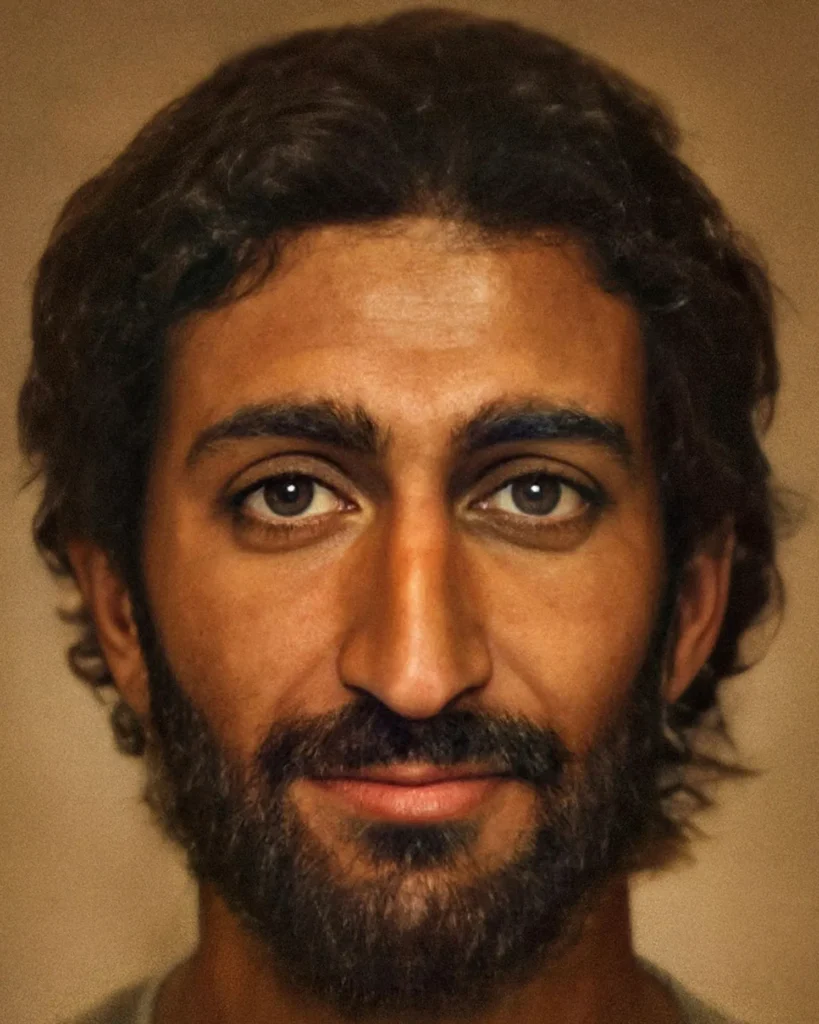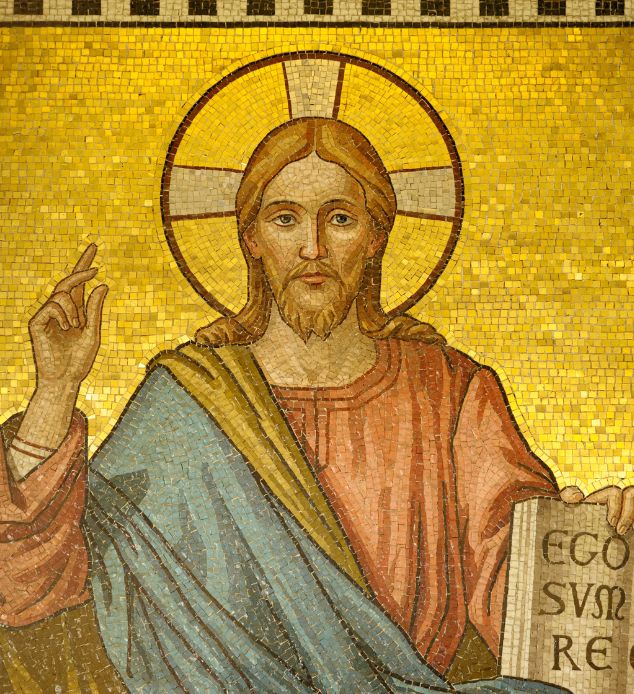Theologians and historians have debated for nearly two thousand years what the historical Jesus Christ might have looked like.
The Son of God is typically portrayed in Renaissance art — and by the Catholic Church — as a towering, hulking European with long, blond hair and piercing blue eyes.
However, most historians agree that a carpenter’s son born in modern-day Palestine would have the same physical characteristics as the natives of that time: a shorter, stockier frame with curly black hair.
But the debate may have been settled once and for all thanks to an innovative artificial intelligence tool deployed by a Dutch photographer and digital artist.
The expert in algorithmic picture synthesis, Bas Uterwijk, used the machine learning capabilities of the program Artbreeder to create a stunning portrait of Jesus.
His “historically accurate” depiction of the Messiah stands in stark contrast to Western art and ecclesiastical depictions of the Messiah.

Bas Uterwijk
Mr. Uterwijk stated, “I have a background in Computer Generated images and Special Effects.
“The artificial intelligence software utilises a neural network trained on photographs and paintings of thousands human faces.
“This application makes it possible to combine multiple sources of faces and merge them in a synthesised version, guided by the artistic decisions of the user. I use it to create historical and fictional characters.
“I used several cultural depictions of Jesus of Nazareth of Byzantine and Renaissance origin including Leonardo da Vinci’s “Salvator Mundi”, and the Turin Shroud, tweaking the ethnicity to a more convincing Middle-Eastern face.”
He added: “I was happy with the result as a representation of a collective cultural depiction but at the same time I felt it lacked any historical accuracy.
“So I changed the hair and beard to a more credible length and style for the time and region and I brought in elements found in some Fayum mummy portraits, pushing the renaissance art to the background.
“The result is an artistic impression of how this man could have looked, more than it is a scientific search for an exact likeness.”
Even though the discussion over Jesus’s appearance’s veracity has been going on since Christmas 2020, this magnificent image has resurfaced this year.
According to the Bible, Jesus was born to a Jewish family in Bethlehem in 4 BC, raised in Egypt, and eventually settled in the city of Nazareth in what is now Israel.

The garments Jesus wore are described in several gospels, yet he is rarely depicted in any detail.
Longtime researcher and author of What Did Jesus Look Like Joan Taylor estimated that Jesus was probably around the average height for a man of his time, which was 5 feet 5 inches.
Taylor writes that mummy images, ancient literature, and other artifacts indicate that the people of Judea and Egypt had dark olive skin, dark black hair, and brown eyes.
She remarked, “Everyone can imagine what Jesus looked like. We have the image of Jesus everywhere. It’s a global image. It’s a phenomenon.
“So we think we can recognise him. We don’t even have to work at it.
“But the traditional images in paintings, in fact, date to the 4th or 5th Century – the long hair, the robe, the beard.
“In reality, that’s not what he looked like at all. Jesus was not a pale person. He was not a European. He was a Jewish man of his time. He was very much of his time and place.”
The scholar, an expert in Christian origins, added: “He would have had dark skin and probably had shortish black hair – long hair was very unusual in the 1st Century – a beard and wore sandals.
“He was a wanderer. He was on the streets. He accepted charity from strangers. He was with the poor.
“The 2nd Century philosopher Celsus said Jesus was shabby, a vagabond who was unkempt – he looked like a beggar. That tallies with everything else we know about Jesus.
“He even described himself as homeless. As he said: ‘Foxes have dens and birds have nests, but the Son of Man has no place to lay his head’.”

Richard Neave
Even though Jesus would have had some cultural exchange with Europeans (who would have had lighter skin) and Africans (who would have had darker skin), Taylor still thinks he would have looked like a normal Jewish guy of the 1st century.
It’s likely that Jesus looked like the average person of his time in the Middle East due to the high intermarriage rate among Jews in Judea and Egypt.
Copy
According to archives, Judeans typically kept their hair and beards short and well-combed to combat the prevalence of lice.
The image has strong parallels to the work of forensic facial reconstruction expert Richard Neave, who in 2001 sought to reproduce the look of a first-century Judean man like Jesus.
His likeness was based on a first-century Israelite skull and was shown in the BBC documentary Son of God.



